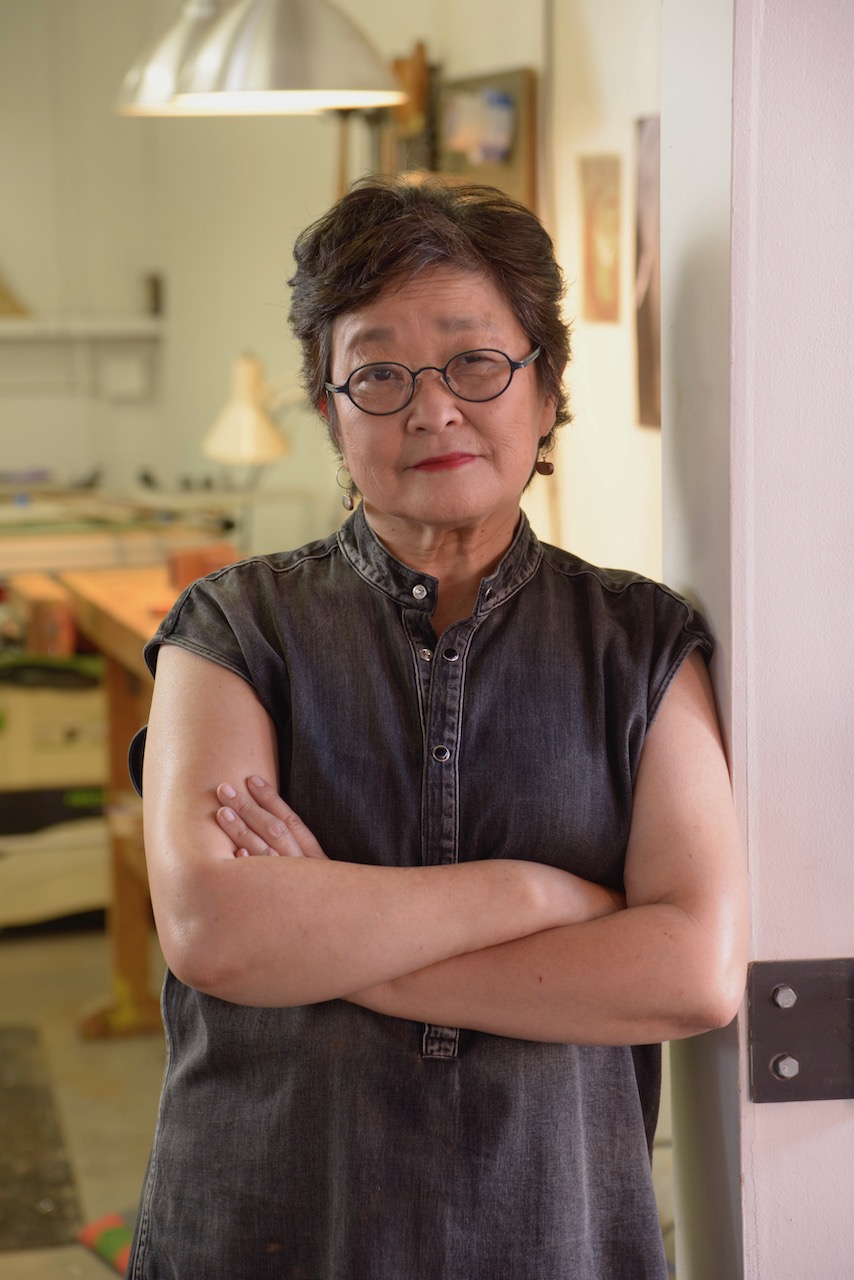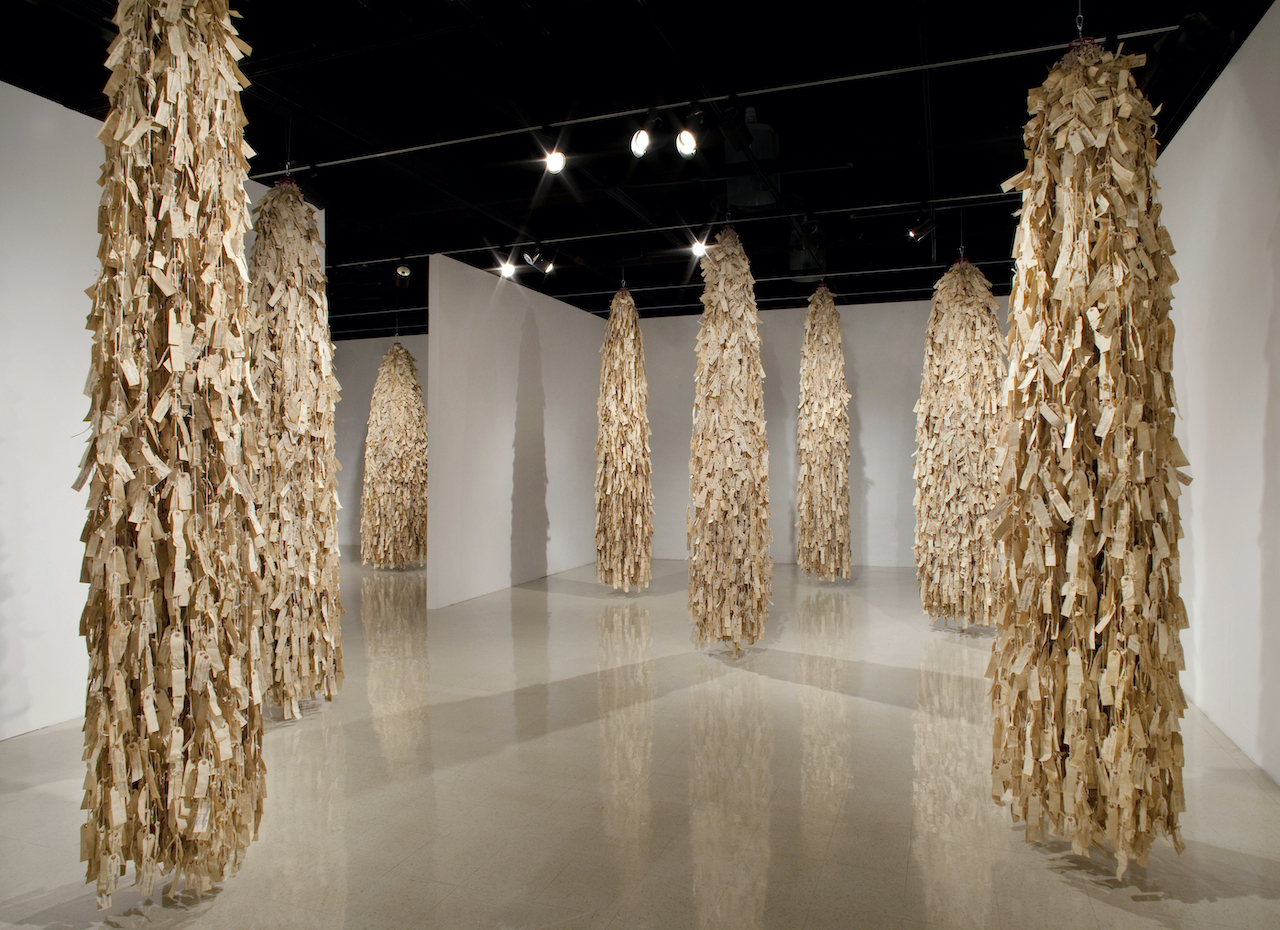
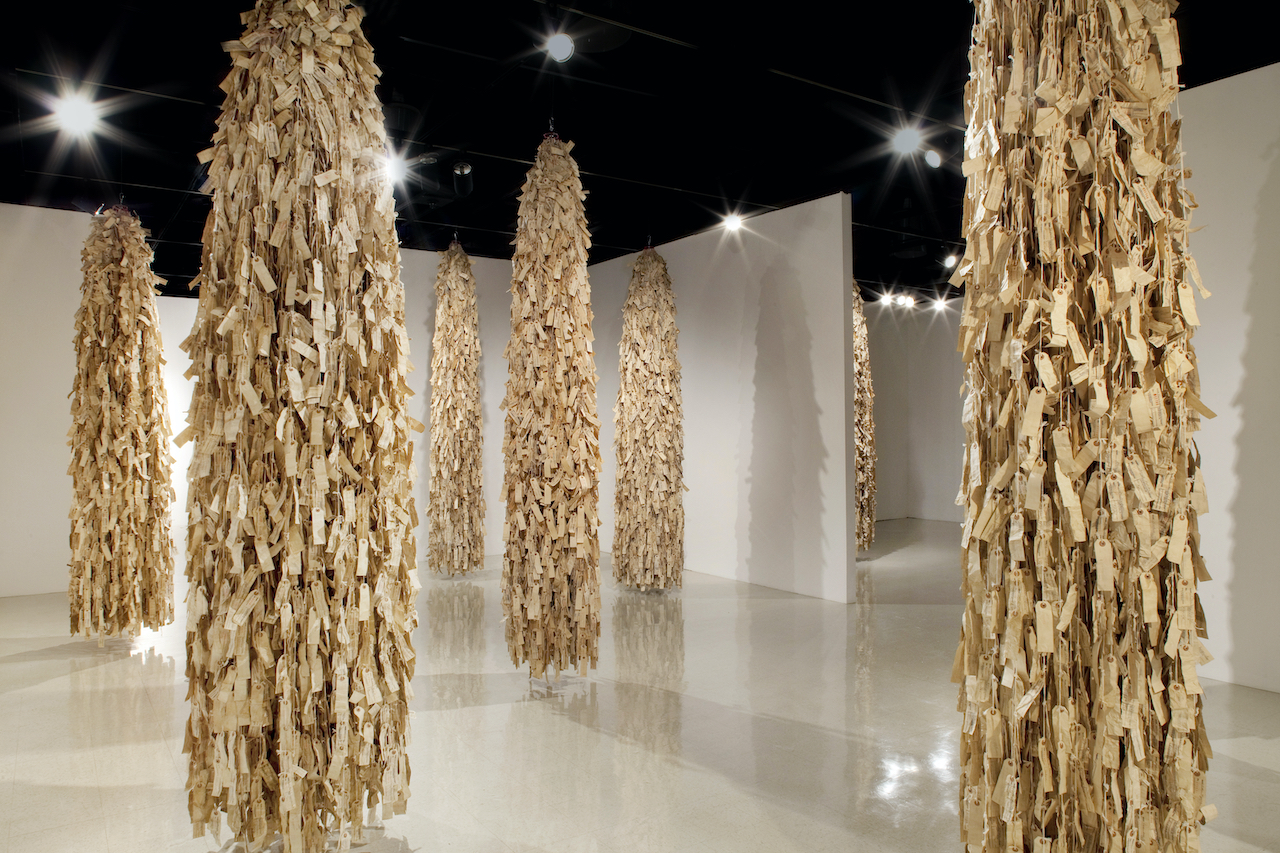
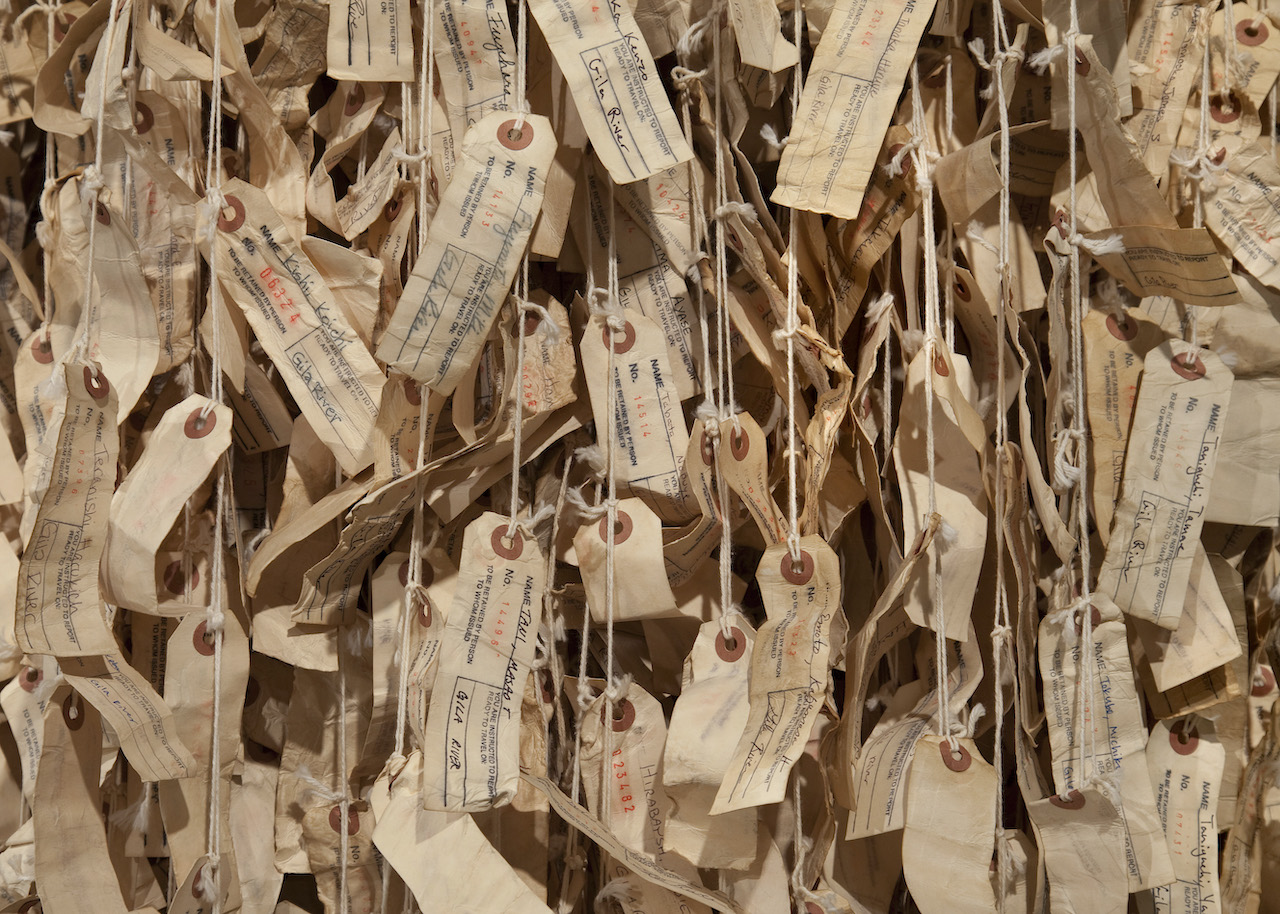
The Tag Project consists of 120,000 replicas of the paper identification tags that internees were forced to wear when they were being relocated. The tags are grouped into ten sculptural bundles and suspended from the ceiling, each bundle represents one of the camps. They evoke a powerful sense of the humiliation endured by the internees and the sheer numbers of those displaced.
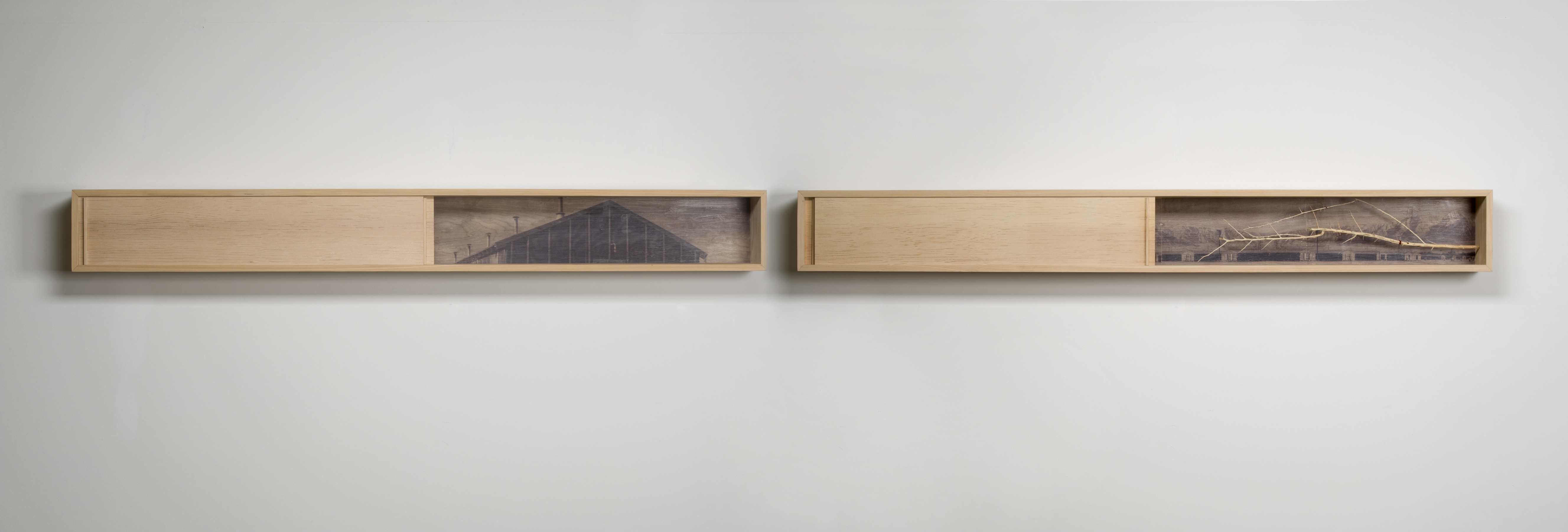
Land of the Free, 2020
From the Executive Order 9066 Series
pine, ink, and branches, 6"h x 120"w x 6"d
Photo Credit: David Harrison
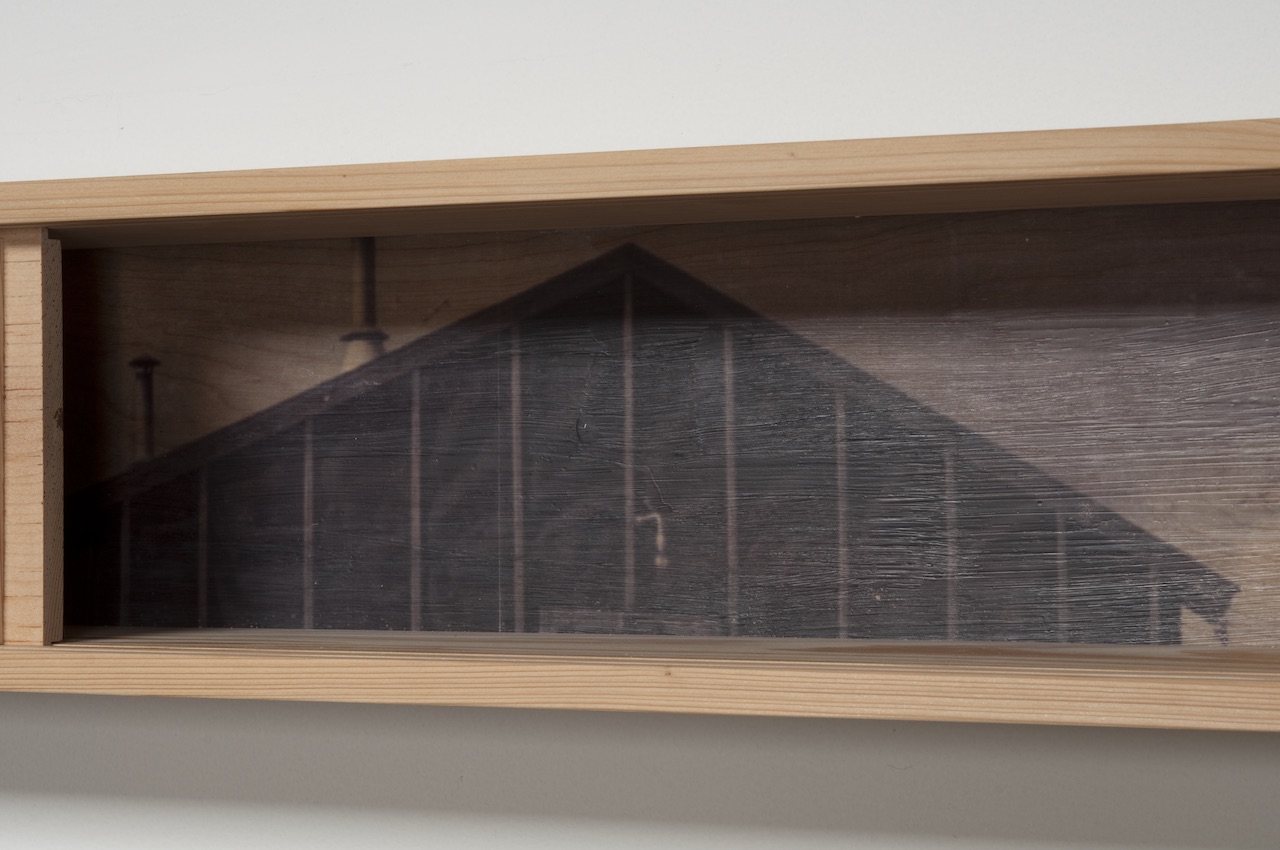
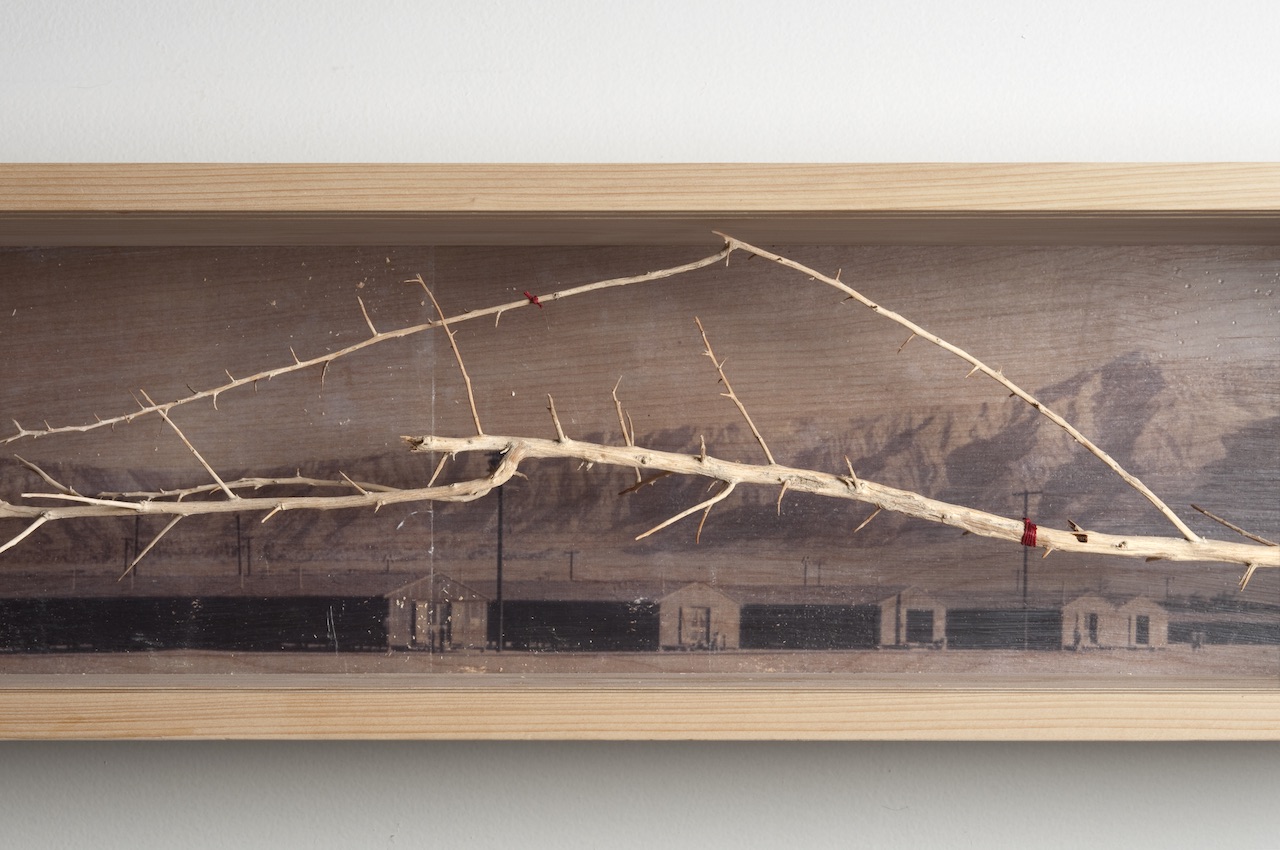
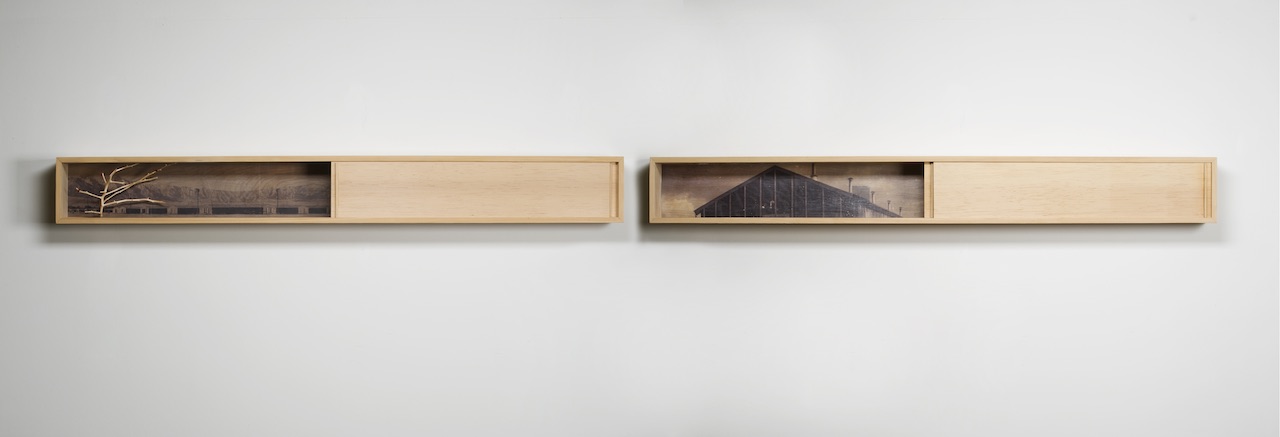
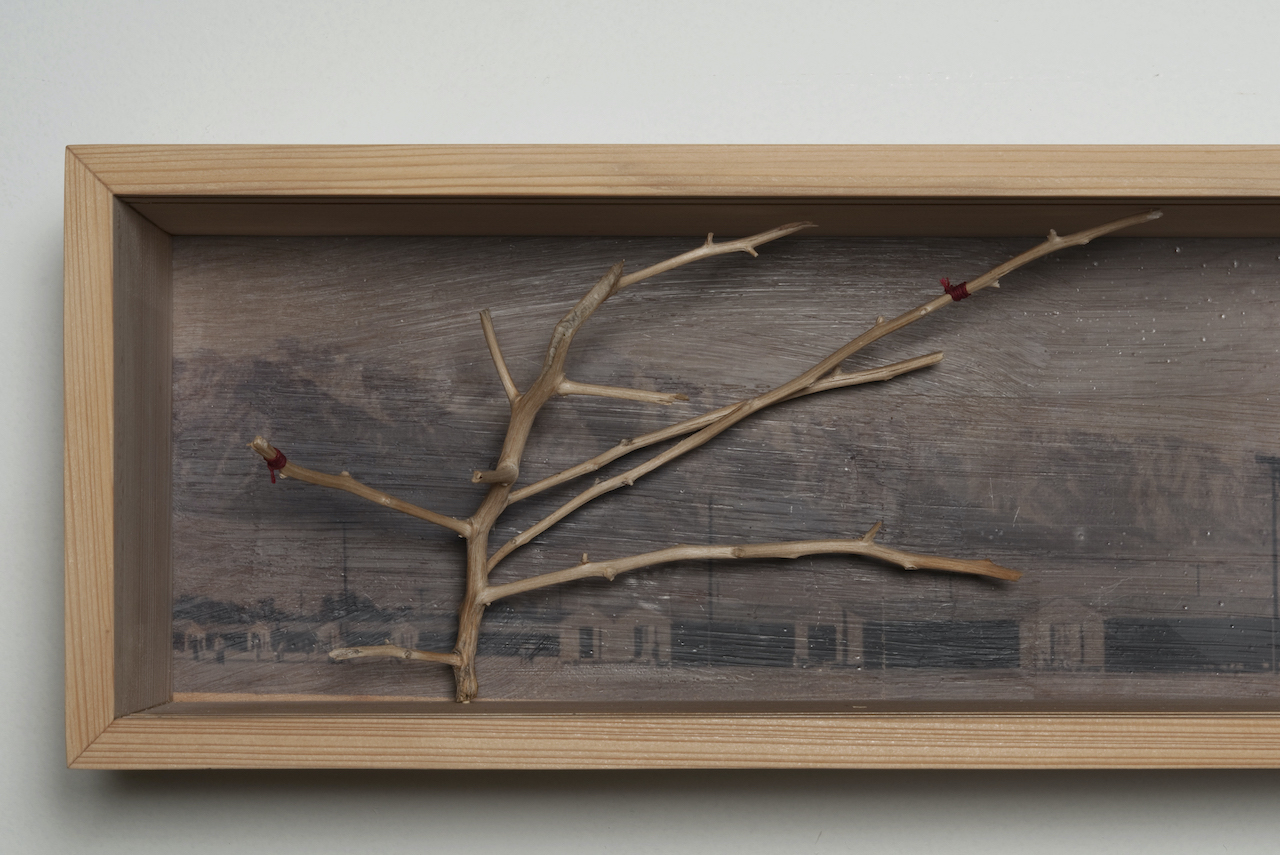
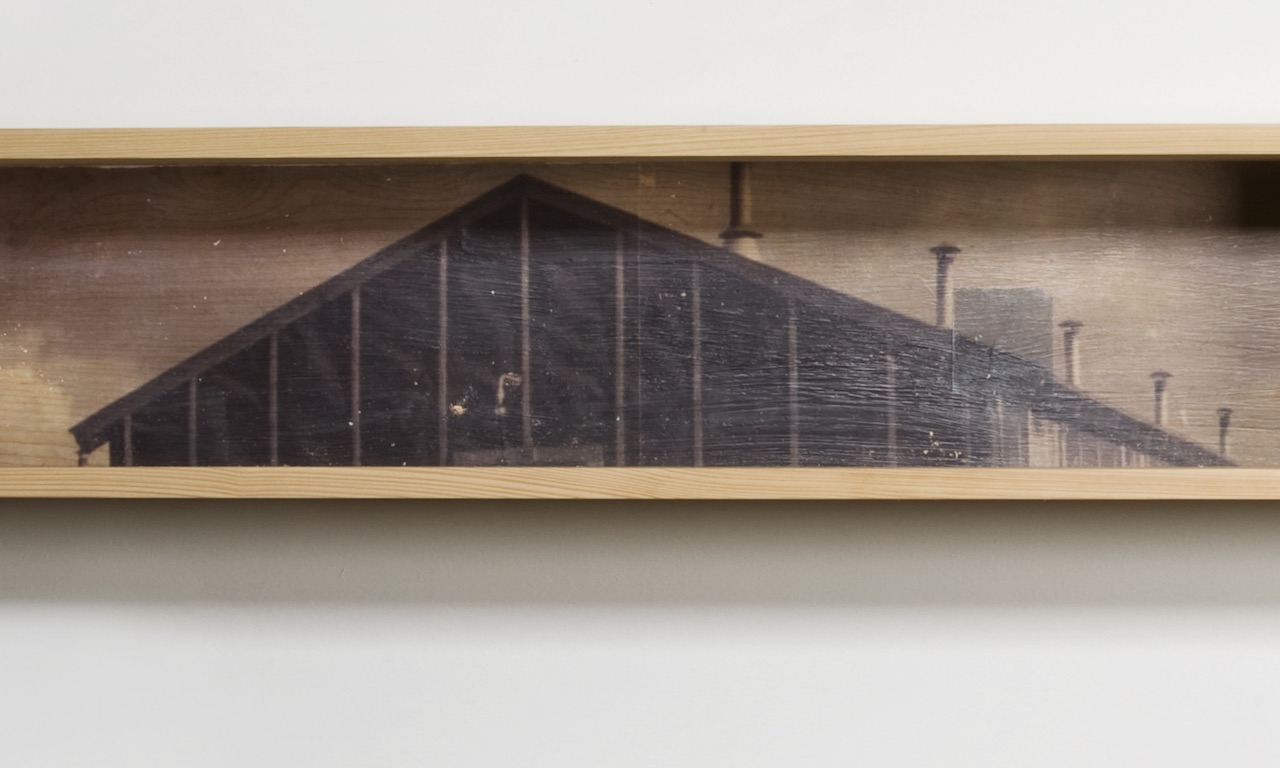
Executive Order 9066 Series (images 2-6) involves a series of wall-mounted cabinets and sculptures referencing themes common in the internment camps. Maruyama’s pieces integrate photo transfers based on the documentary photographs of Dorothea Lange and Toyo Miyatake in conjunction with materials such as barbed wire, tarpaper and domestic objects. Maruyama’s addition of actual objects owned or made by the internees brings an intensely personal awareness to the impact of Executive Order 9066. Included objects range from actual suitcases used by families during their relocation to an array of items made from available materials in the camps.
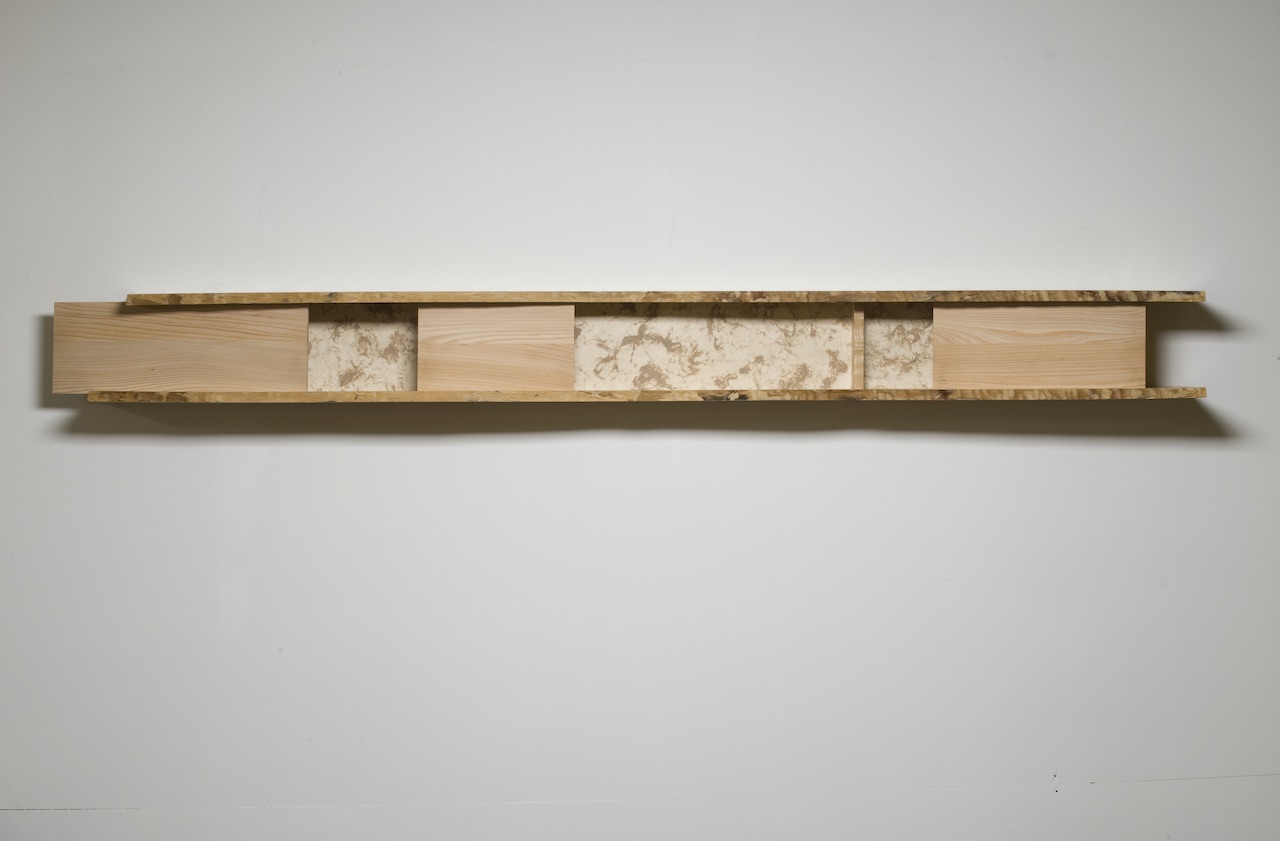
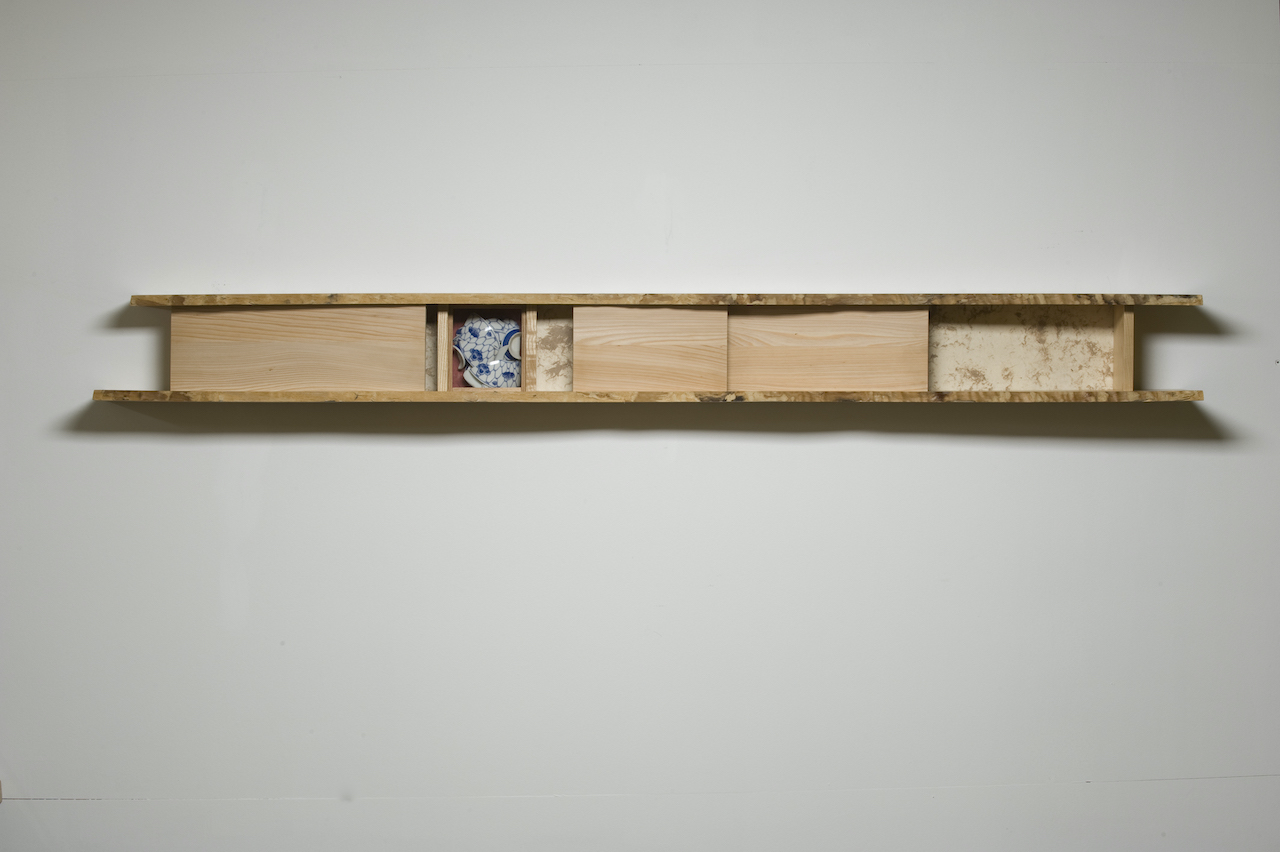
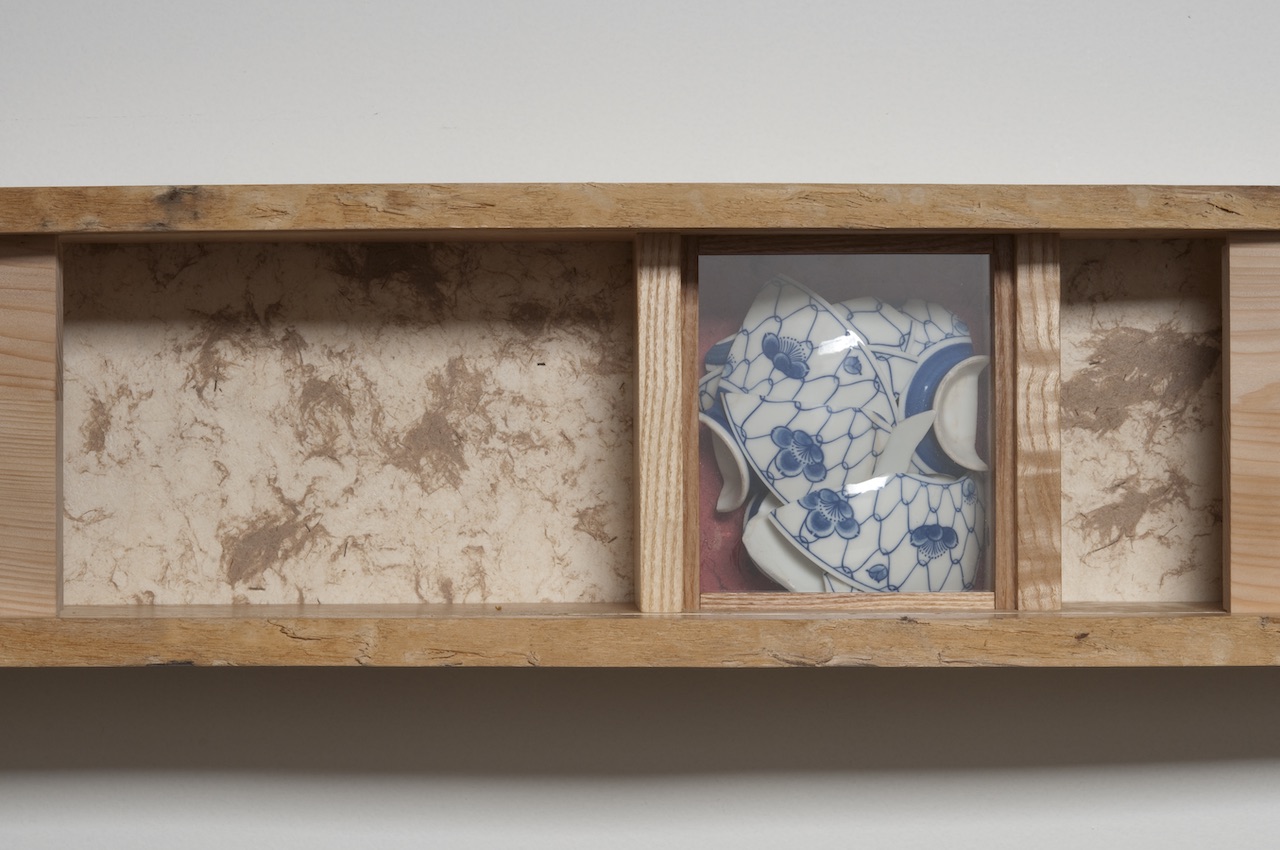
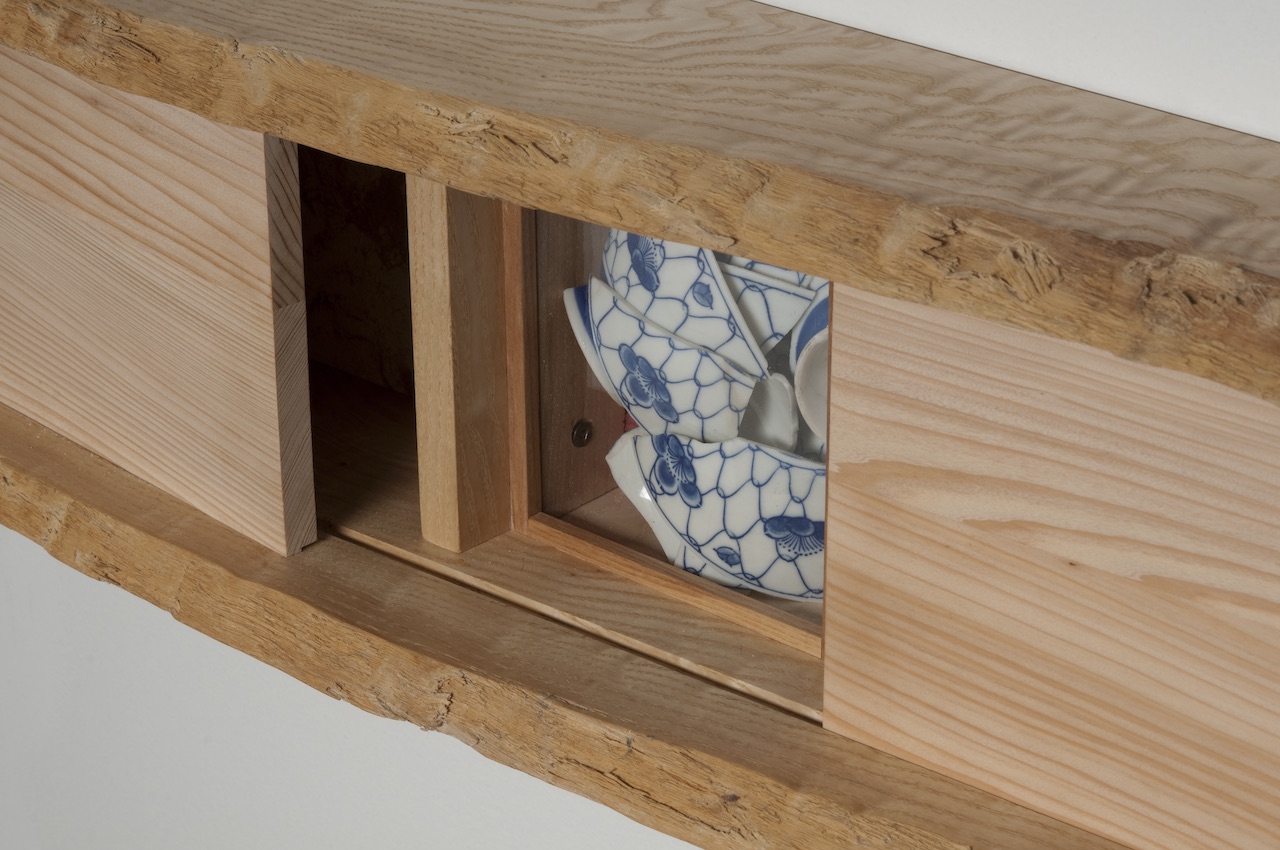
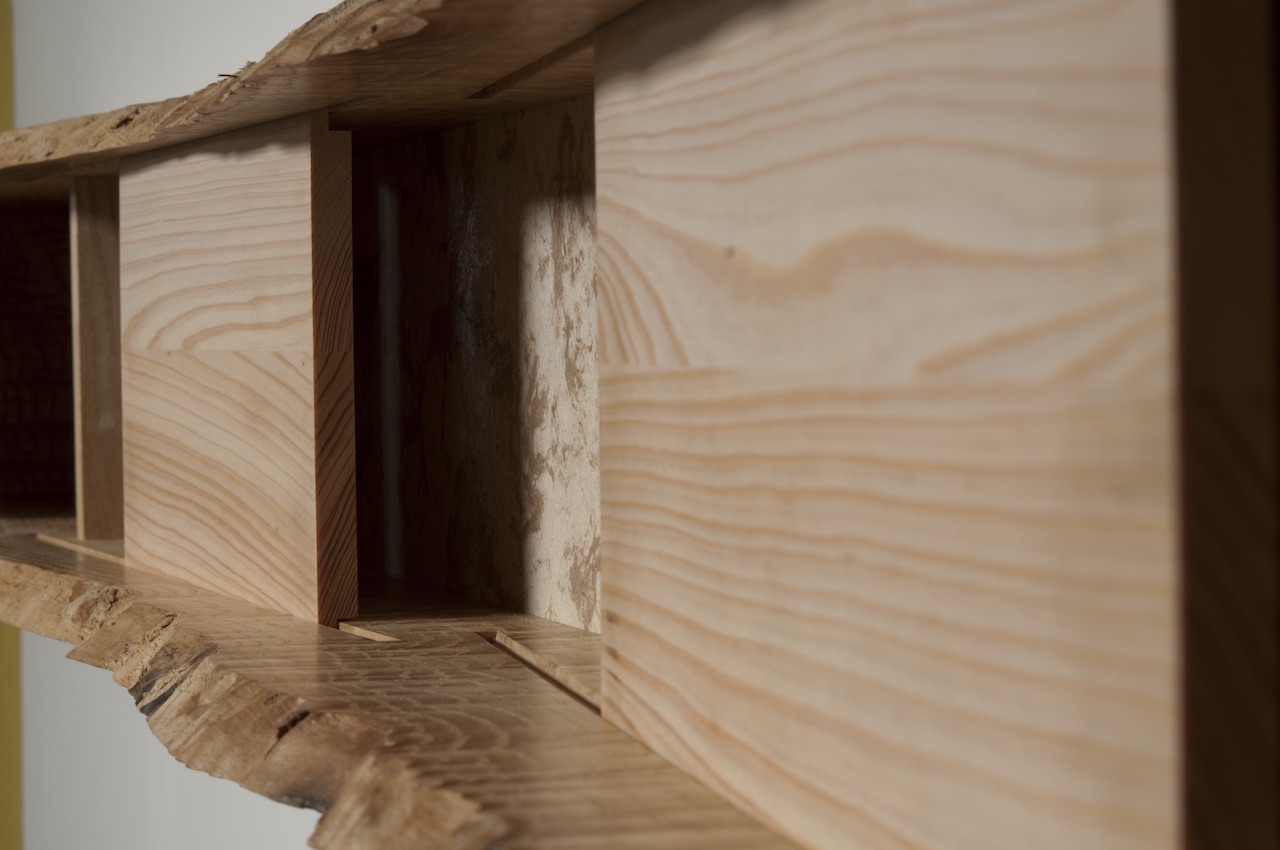
Zenmetsu, 2011
From the Executive Order 9066 Series
ash, paper, glass, pottery shards, 7”h x 72.5”w x 6”d
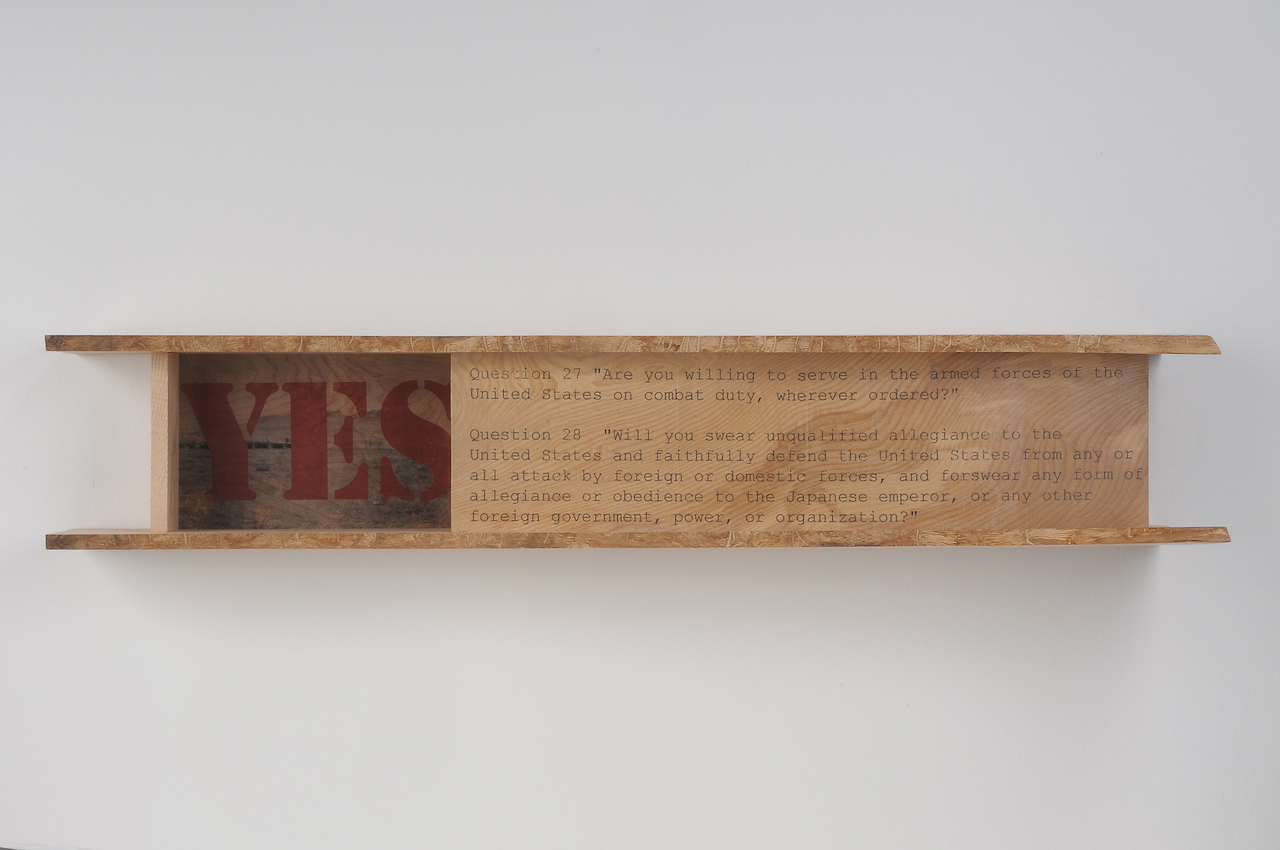
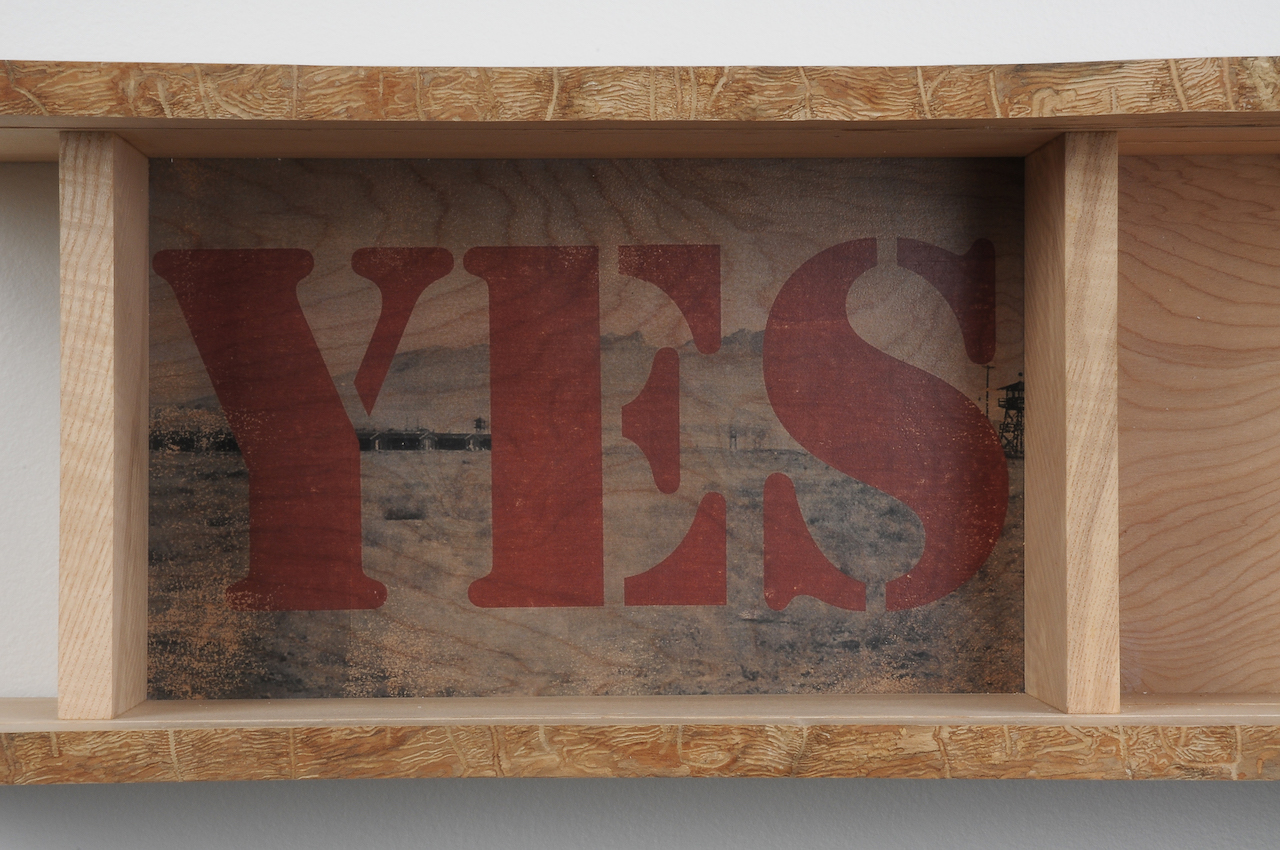

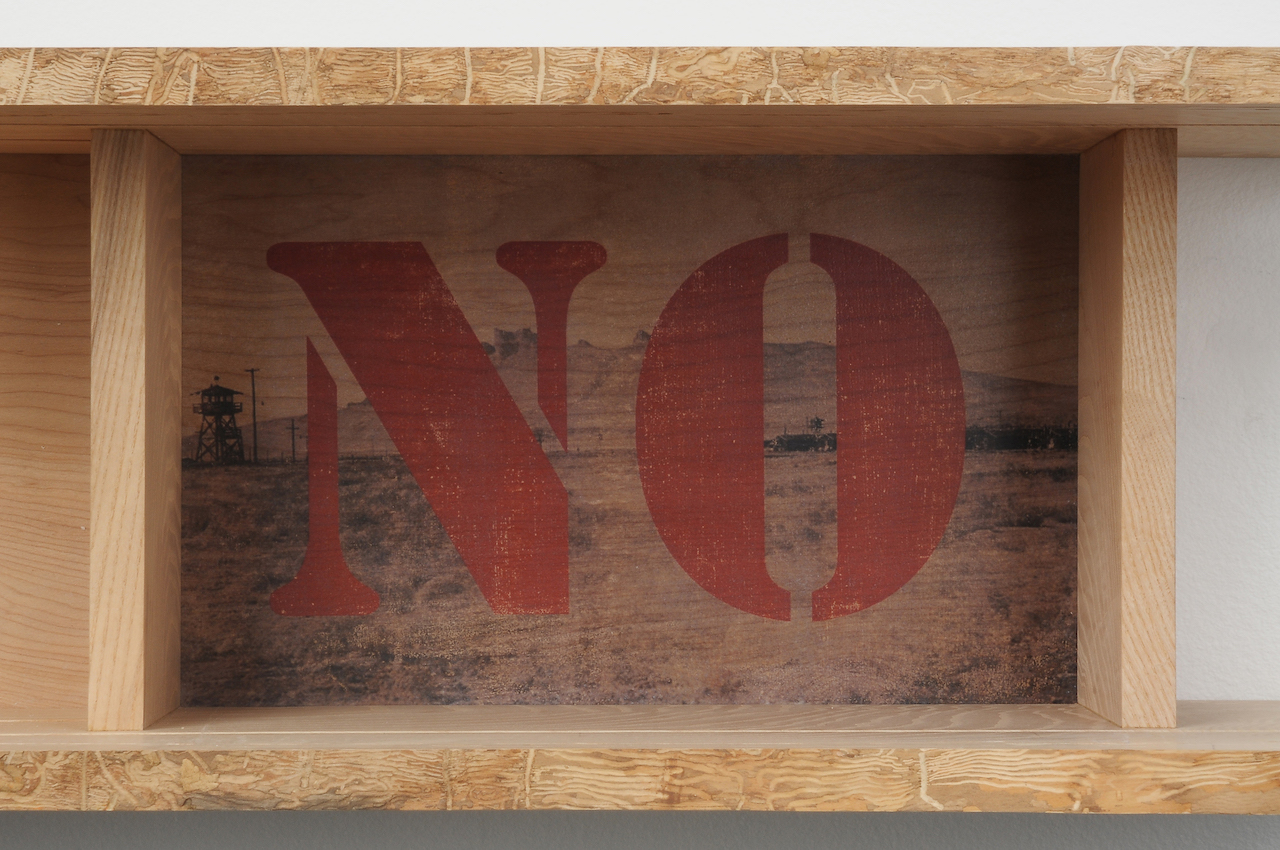
A Question of Loyalty, 2010
From the Executive Order 9066 Series
ash, image transfers, 45”w x 8”h x 6”
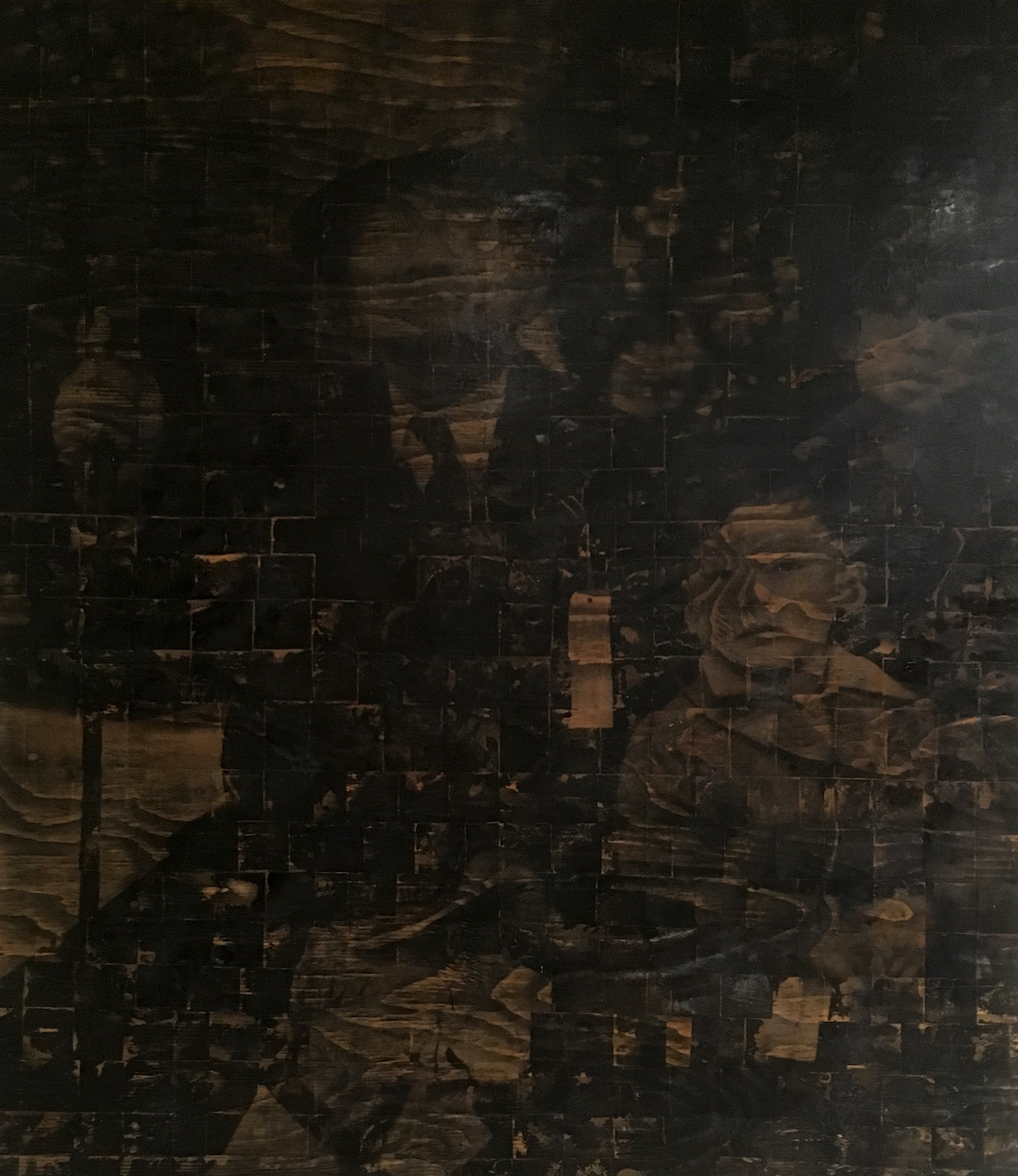
Jichan, 2008
From the Executive Order 9066 Series
image transfers, encaustic, 48” x 48” x 3”
(requires an electrical source)
Dorothea Lange's photographs documenting the internment of the Japanese Americans in 1942 shows us ourselves in the throes of history, buffeted by forces we can't control and confronting stark realities. It is through her lens that we are able to revisit the experience.
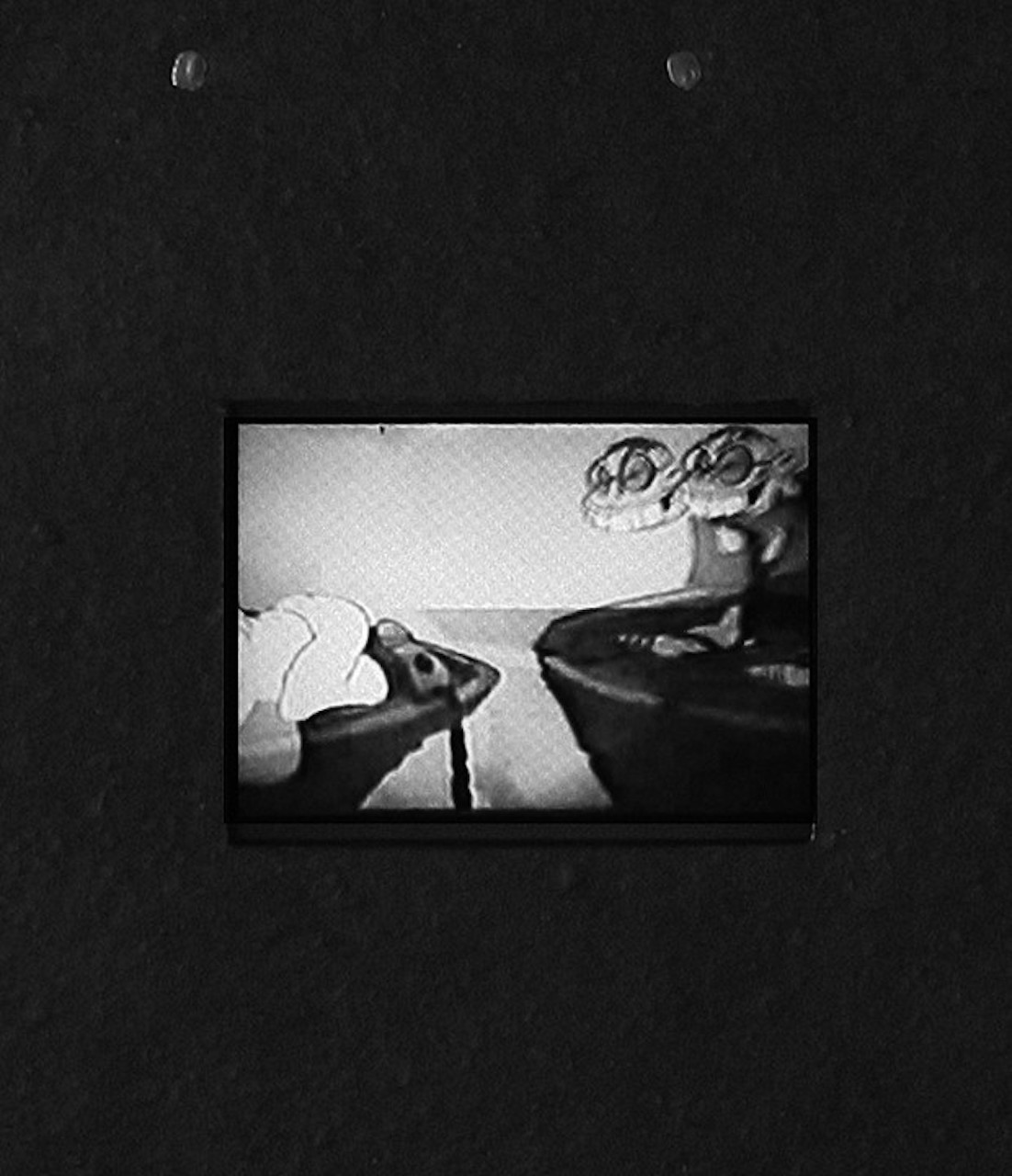
You’re a Sap, Mr. Jap, 2011
From the Executive Order 9066 Series
tar paper, video, 48” x 48” x 3”, video embedded
A favorite past time of mine as a child was watching Saturday morning cartoons: Popeye and Looney Tunes were my favorites. I vividly remember the cartoons which I later realized were very anti-Japanese and racist - in 1955 they were still running these cartoons. One of them had a great little jingle which I remember singing along "You're a Sap Mr Jap" – it was also the first time that I recognized my ethnicity being depicted in a cartoon. This piece is covered with tarpaper, which was used in the construction of the camp barracks. The video monitor is situated at a child's height for viewing and plays a loop of three WWII cartoons depicting Japanese with buck teeth, very slanty eyes and big black glasses.
You're a sap, Mr. Jap, you make a Yankee cranky
You're a sap, Mr. Jap, Uncle Sammy's gonna spanky
Wait and see before we're done
The A, B, C and D will sink your rising sun*
You're a sap, Mr. Jap, you don't know Uncle Sammy
When he fights for his rights, you'll take it on the lammy
For he'll wipe the Axis right off the map
You're a sap, sap sap, Mr. Jap
You're a sap, Mr. Jap, you make a Yankee cranky
You're a sap, Mr. Jap, Uncle Sammy's gonna spanky
Wait and see before we're done
The A, B, C and D will sink your rising sun
You're a sap, Mr. Jap, oh what a load to carry
Don't you know, don't you know, you're committing hari-kari
For we'll wipe the Axis right off the map
You're a sap, sap, sap, Mr. Jap
You're a sap, Mr. Jap, oh it makes a Yankee cranky
You're a sap, Mr. Jap, Uncle Sam's gonna spanky
Wait to see before we's done
The A, B, C and D will sink your rising sun
You're a sap, Mr. Jap, oh you don't know Uncle Sammy
When he fights for his rights, you'll take it on the lammy
For he'll wipe the Axis right off the map
You're a sap, sap sap, Mr. Jap
You're a sap, Mr. Jap, oh what a load to carry
You're a sap, Mr. Jap, you're committing hari-kari
For we'll wipe the Axis right off the map
You're a sap, sap sap, Mr. Jap







